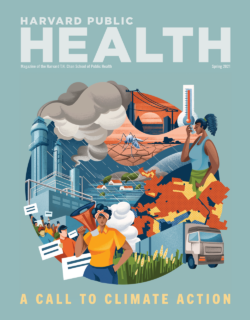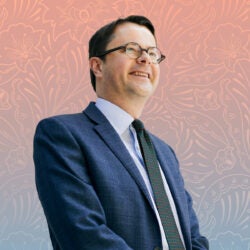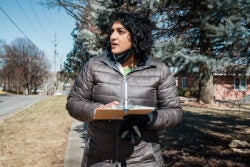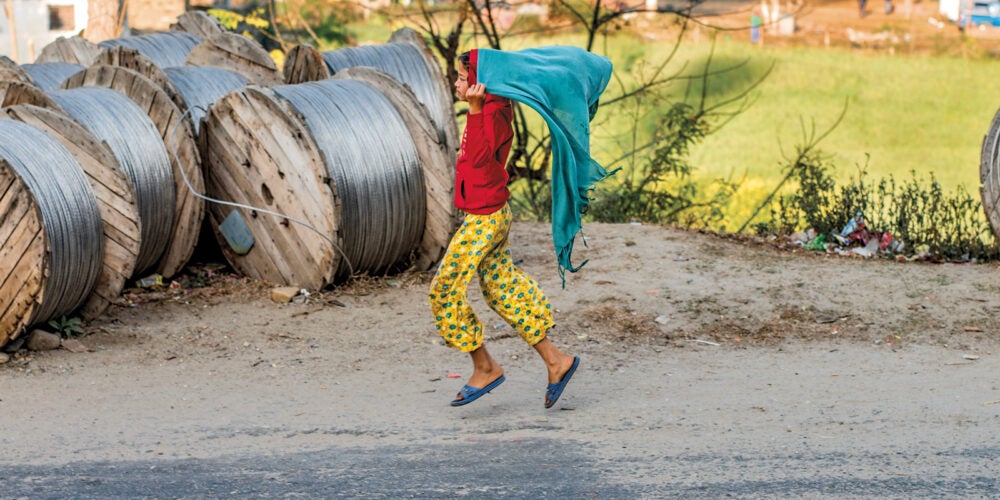
People
Last mile first
On a sunny day in 2016, Isha Nirola, DrPH ’21, traveled to the remote village of Chandika in Nepal’s western Achham District. On her team were two young women, a nurse and a community health worker (CHW), who carried backpacks full of inhalers, hypertension medication, and other tools of primary care. Nirola watched and listened carefully as the women met with residents in the fields they farmed and in their homes. They accepted offers of tea and exchanged pleasantries while charting the progress of coughs and pregnancies. It wasn’t their first trip to Chandika, nor would it be their last, and Nirola knew that each visit meant saving sick and elderly residents from having to choose between embarking on a treacherous, hours-long walk to the nearest health clinic or chancing it at home with traditional remedies.
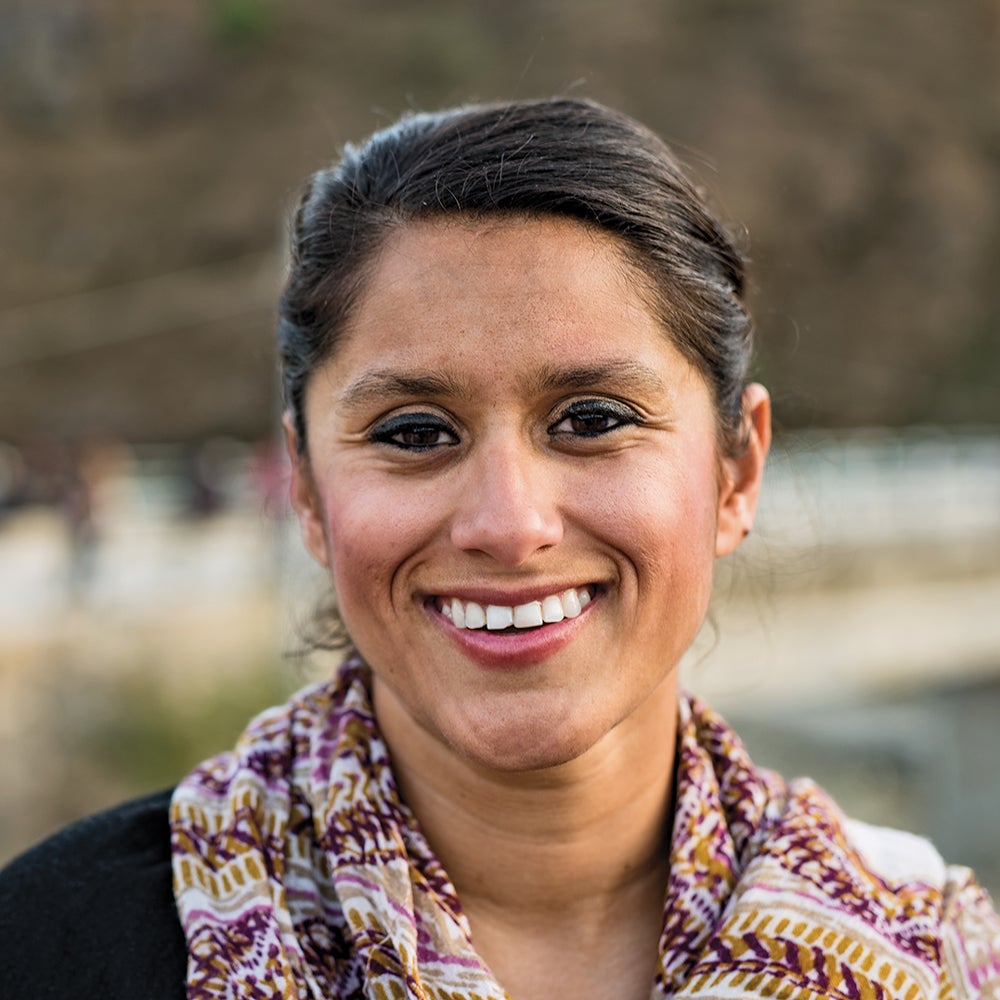
Places like Achham District are known in global health–speak as “last-mile communities,” locations where remoteness and poverty limit people’s access to quality health care and leave them highly vulnerable when disaster strikes. Nirola, who graduated in May from the Harvard T.H. Chan School of Public Health, has built a career advocating for people in communities like this around the world, from the Pacific island nation Kiribati to South Sudan. For her, it’s a deeply personal act.
Nirola’s father grew up in a Nepali village much like Chandika and lost his mother and four of his seven siblings when he was a child. He and Nirola’s mother emigrated to the U.S. before Isha was born, and as a teenager and young professional, Nirola always felt the pull of her ancestral country. In 2014, after years of working in Pacific islands, South Sudan, India, and the U.S., she got the chance to give back to Nepal, joining the health care nonprofit Possible as the director of community health.
Sign up for Harvard Public Health
Delivered to your inbox weekly.
Bringing care to communities
Isha Nirola (lower right in black) traveled with her community health worker team (one member is pictured above right) to visit patients in their homes.

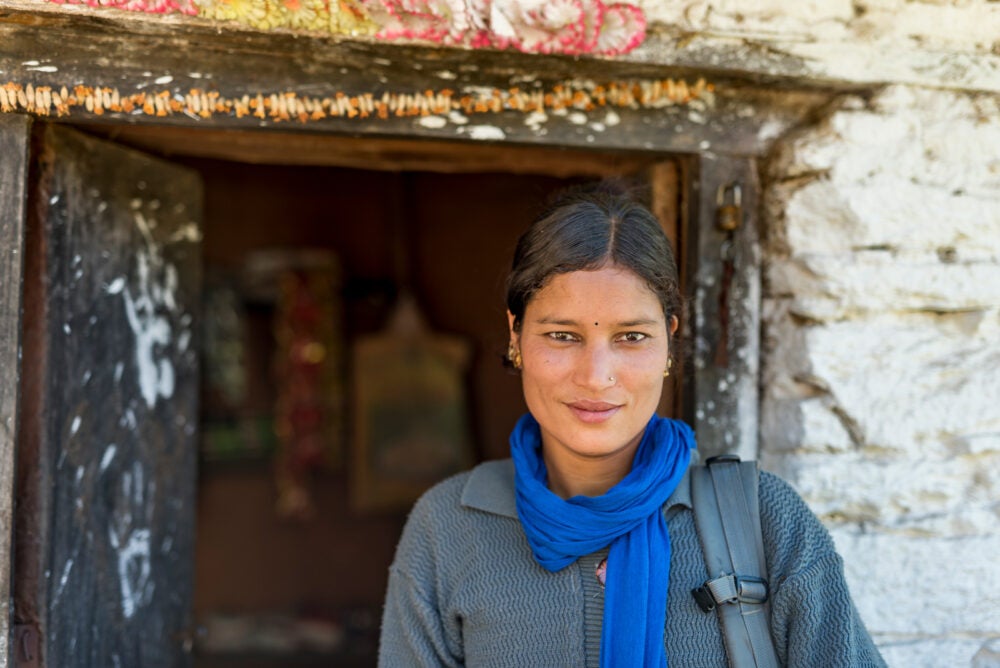
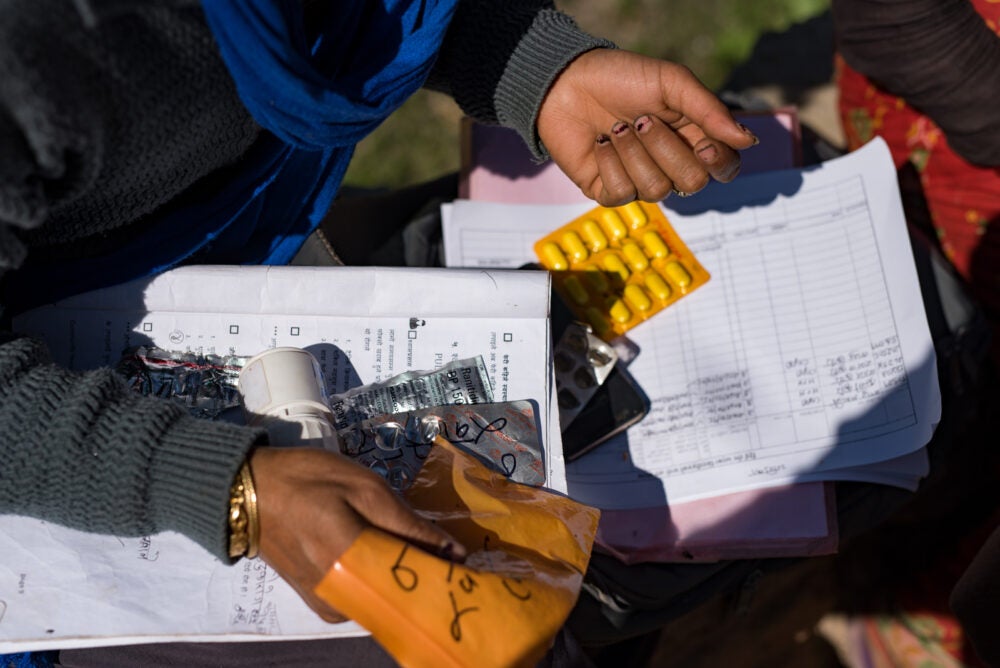
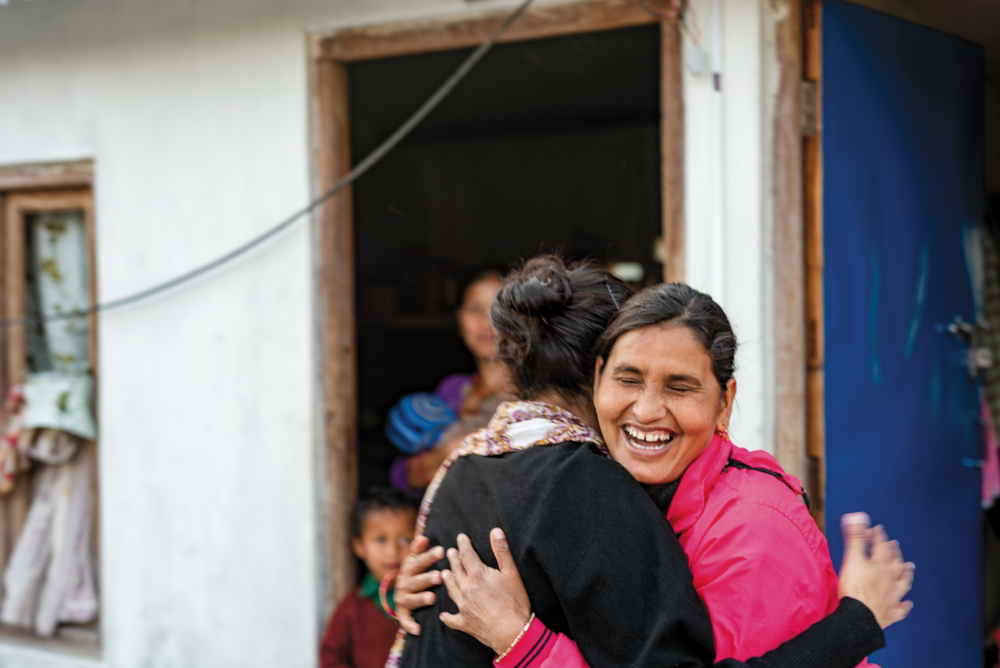
Possible, created in 2005 to help strengthen Nepal’s health system, had been partnering with the country’s ministry of health to help bolster health infrastructure. The mission was made even more urgent after 2015, when a massive earthquake near Nepal’s capital, Kathmandu, destroyed more than a thousand health facilities. Although Achham District was not directly affected by the earthquake, the disaster further strained the country’s limited health care workforce and financial resources, and every district was impacted in one way or another. But like many rural communities around the world, Achham had women working as volunteer CHWs who were fiercely committed to improving health care in their villages.
Under Nirola’s guidance, the Possible team, in collaboration with the ministry of health, created information systems and organizational infrastructure for a professional CHW program. They recruited, trained, and paid local women to make home visits and provide prenatal care and other services at clinics and developed the country’s first integrated electronic health record system. The CHW program’s success in improving the health of women in communities led to the ministry referencing the model to design its own pilot.
Nirola’s time in Nepal was marked by many successes. But it also presented numerous challenges, some of which extended far beyond the country’s health system. Working in Nepal, a country where a rigid caste system has persisted for centuries, forced Nirola to think deeply about her identity as a Nepali American. Some of the CHWs were Dalit, the lowest caste in Nepal, and found themselves shut out of the homes of higher-caste families. As she sought to support and be an ally to the Dalit members of her team, Nirola found herself in some uncomfortable conversations around her identity and privileges, including with her Nepali future husband.
“I realized that I needed to do some personal work to accept that I’m not fully embraced as someone who is born and raised in Nepal,” Nirola says. “People do see my privilege, and that can be isolating. But I needed to exercise some humility around the fact that as much as I want everybody to see me as pure Nepali, I’m not.” With time, she says, she came to feel more confident in owning her dual identities. “I’m not worried about how other people describe me,” she notes. “I have internalized who I am.”
After three years with Possible, Nirola decided to work toward the next phase of her career and come to the Harvard Chan School. “That was a pivotal moment for me,” she says. “I felt like I needed to take a break from work and build my leadership skills. I wanted to reinvest in myself.”
“I deeply believe that leveraging community health workers from within the communities they are serving can make a difference for populations and create a more dignified patient experience for individuals grappling with disease and discomfort.”
Isha Nirola
Eyes wide open
Nirola tells her life story through moments that opened her eyes to the world’s inequities, starting with a family vacation to Nepal when she was 15. She had been to the country before, but only to the cities. This time, the family traveled to her father’s childhood village, an experience that helped her realize how vastly different her life’s trajectory could have been.
“It was humbling to say the least,” she says. Seeing malnourished children on the streets and hearing stories of family members whose lives ended far too early from preventable causes shocked the teenager. For the first time, she understood how big the gap was between the world’s poorest countries and its wealthiest. By the time she returned to the comforts of her middle-class home in Maryland, the seeds for her future career had been planted. “My desire to become a citizen of the world, and to fight against injustice and inequality, evolved from that trip,” she recalls.
The next eye-opening lesson happened during an undergraduate class on the U.S. health system at the University of Maryland, where she studied health administration and policy and minored in public health. The course revealed to her that health inequity was not just a problem for remote villages in Nepal. In fact, she learned, millions of people in the U.S. lacked health insurance and could not access proper care.
Nirola was shocked, and after college, she channeled her outrage into serving as a health advocate for children in the juvenile-justice system. She worked in Baltimore, supporting kids and their families living just an hour away from where she grew up, who were navigating very different lives from her own. As she offered health counseling and helped young people access services such as legal aid and health insurance, Nirola picked up on a larger problem—the enduring legacy of slavery and racism.
“The historical ramifications of slavery were visceral to me in the mass incarceration and institutional racism I witnessed,” she says. Moreover, she adds, the media at the time largely ignored the epidemic of gun violence plaguing young Black men. She recalled flipping through the local newspaper to learn more about a nearby shooting and not being able to find any information. “Society’s silence was a constant reminder that these men’s lives were not considered important,” she says.
Walking and waiting
Patients line up outside the pharmacy window at Bayalpata Hospital in Achham, Nepal. For some, the trip there meant hours, or even days, of walking over treacherous terrain.
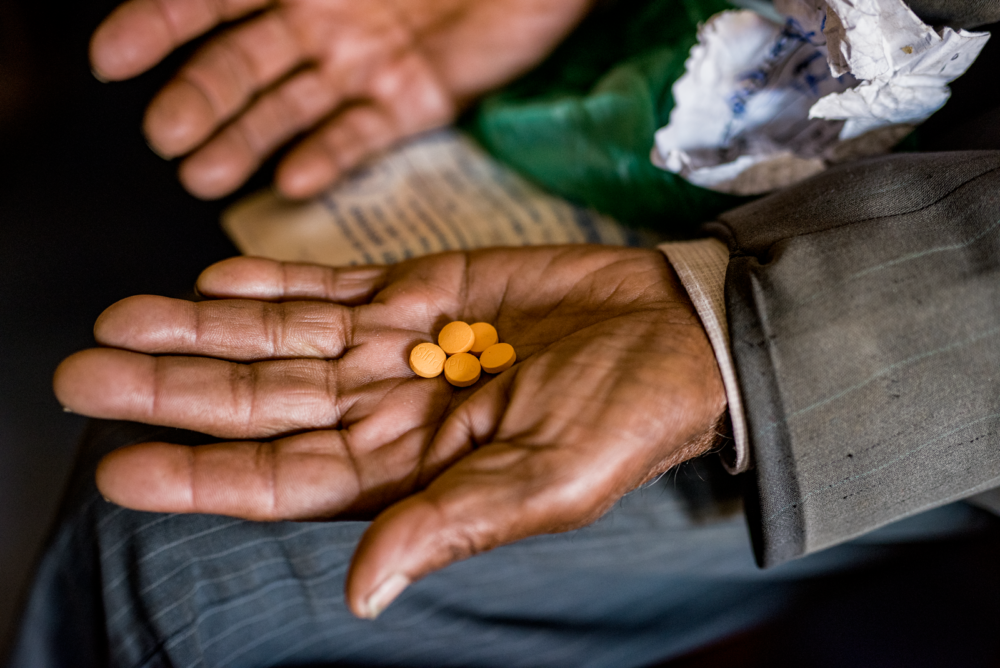

Global connections
While advocating for children in the juvenile-justice system was important and fulfilling, Nirola couldn’t shake her aspirations to work in Nepal. She applied for the Peace Corps with that aim but was told that recruits weren’t sent to places where they already had a connection. The goal of the job was to have one’s connection to the world expanded.
Inspired by the idea, she signed up and was sent to Kiribati, a low-lying island nation in the Pacific that is at risk of becoming uninhabitable by 2100 due to climate change. (See No Time to Waste) She organized and ran health workshops on the outer islands, where communities lacked consistent electricity and running water. Even without these basic resources, she saw local health care workers persisting day in and day out to help residents in need.
It was a formative experience, and at the end, Nirola says, she realized that she needed to learn more to do more in the world. She earned a master of public health (MPH) degree at New York University (NYU) and then worked as a consultant in India for the Human Rights Law Network’s Reproductive Rights Initiative. Her efforts contributed to two landmark judgments from India’s Supreme Court linking access to reproductive health care to the Indian constitution’s guarantee of the right to life. But this legal success came too late for many women in the country, whom Nirola saw dying from preventable causes because they lacked agency over their own bodies.
From India, Nirola made her way to South Sudan, where she worked for the Atlanta-based Carter Center’s Guinea worm disease eradication campaign under legendary eradication expert Donald Hopkins, MPH ’70. There, violence against women was common and visible, she says, and communities also grappled with ongoing conflict, food insecurity, and disease.
“It was heartbreaking to see so much pain and violence around me,” Nirola says. “However, it also enabled me to focus on why it was so important to continue to work in solidarity with community members as they tackled this one form of suffering.”
Nirola spent time in villages hard-hit by Guinea worm disease—a painful parasitic infection—working with field officers who knew the communities well. The Carter Center’s approach of building trust with local people and treating everyone as human beings who want to end their own suffering spoke volumes to Nirola. She came to see how simple measures such as showing people the parasitic fleas floating in a glass of their water and providing devices to filter them out could make a world of difference. Indeed, thanks in large part to the Carter Center’s efforts, global incidence of Guinea worm disease dropped from 3.5 million people in 1986 to just 27 as of January 2021.
But from NYU to India to South Sudan, Nirola’s dream of working in Nepal never diminished. When she joined Possible in 2014, she arrived in the country having learned the importance of earning trust among communities and leveraging the skills and knowledge of local residents.
Nirola’s steady vision and commitment allowed her to make immediate contributions, says Aradhana Thapa, a research specialist at Possible who worked with her on building data systems for the community health team. “Isha is a phenomenal professional and makes a significant impact wherever she goes,” Thapa says. “She is vocal, kind, generous, and a listener, and invests in understanding context and complexity before making decisions. She connects to people and is guided by human values, and she believes in growing everyone along the journey.”
After several years of working in Nepal, Nirola came back to a familiar sentiment: She wanted to learn more to do more. In particular, she wanted to learn how to lead. “As I started to take on more senior positions, I found that I had the technical experience to do the job, but navigating the interpersonal dynamics of a team could be a struggle,” she says, noting that it can be especially challenging as a female leader of a mostly male team.
She considered her options and applied to the Harvard Chan School’s DrPH program because of its emphasis on cultivating leadership skills—and for a new perspective on her experiences so far.
Care in the last mile
Places like Achham are known as “last-mile communities,” locations where remoteness and poverty limit people’s access to quality health care.
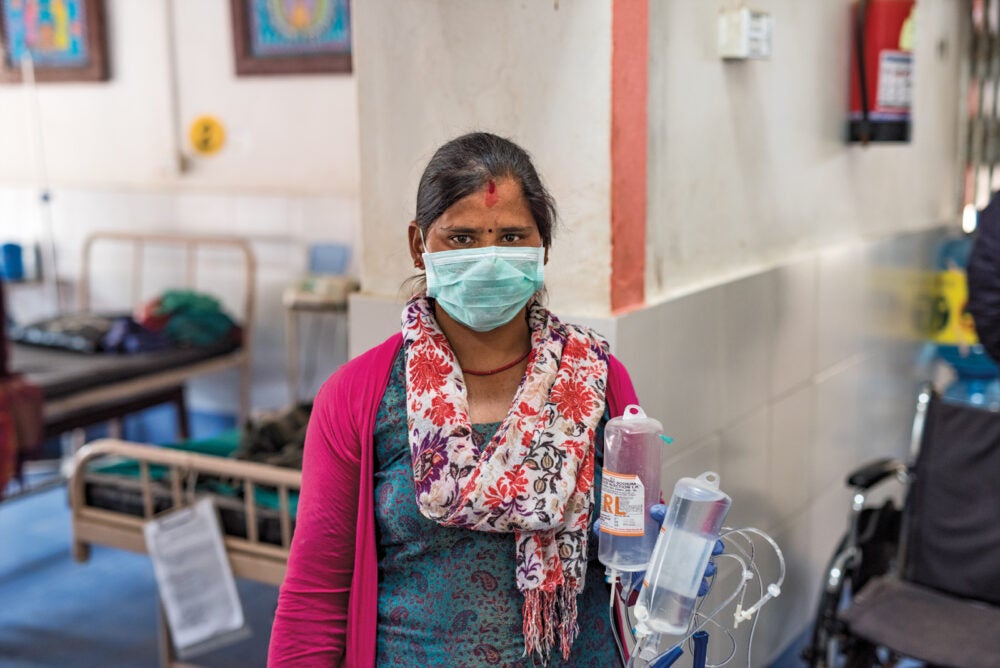
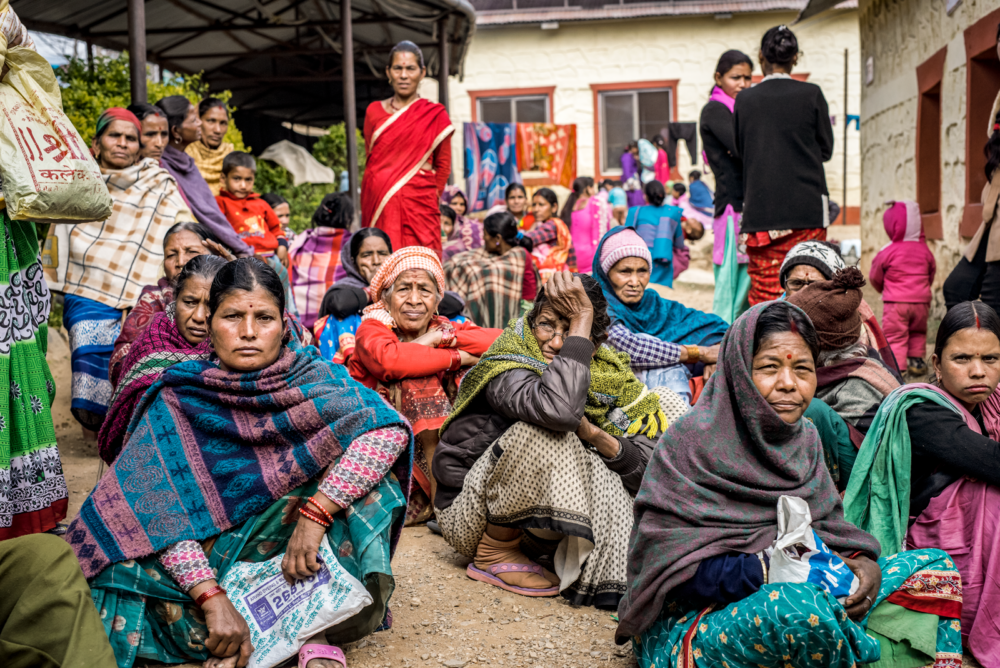
Finding community-led solutions
The DrPH program—aimed at students who want to lead practice-oriented public health agencies and organizations—starts with a retreat-style workshop that encourages deep exploration of leadership strengths and vulnerabilities. Students are also paired in their first year with executive coaches, who help them reflect on what they’re learning. Nirola relished the process, describing it as “almost like therapy.”
In the three years Nirola has been in the program, her skills have evolved tremendously, says Fawn Phelps, director of leadership development, who works closely with the DrPH students. “I have seen her give herself more grace and space to be a leader in progress,” Phelps says. “She’s clearly grown in her ability to read an entire system and understand the areas where she can have an impact and where she needs help from others.”
Phelps notes that Nirola is building on an already impressive foundation—and an unwavering commitment to serving vulnerable communities. “Her moral compass is firmly grounded toward serving those who are systemically oppressed,” Phelps says. “That is clear in her dedication to her public health practice and her leadership.”
In the classroom, Phelps adds, Nirola always made sure that last-mile communities were not forgotten. She would push Phelps, other instructors, and fellow students to think about how the course material they were discussing could be applicable to a full range of public health scenarios, including in low-resourced areas. “She would do it in a way that was very gently and appropriately guiding us toward a different and better way of thinking,” Phelps says.
In addition to helping her grow as a leader, the program prompted an unexpected change to Nirola’s own way of thinking about her identity in the world of public health. “I realized that I actually identify more as a community health practitioner than a global health practitioner,” she says. Community health work can occur anywhere in the world, she notes. The difference is in where decisions are made.
“It’s important for me to work with organizations that support local efforts and push for policy change using that lens,” Nirola says. “I don’t want to be in spaces where decisions are made that are disconnected from the communities they serve.”
For the first time in many years, she’s feeling pulled to work on the myriad health and social challenges facing the U.S. During her doctoral program’s winter immersion experience in 2019, she and two other students worked with members of the Mashpee Wampanoag tribe in Massachusetts to develop an opioid-use-disorder intervention. To ensure that the solutions were driven by the community, Nirola and her colleagues organized meetings and home visits with a wide range of members of the tribe—some of whom shared stories relating opioid-use disorder to the historical trauma the community has experienced for generations.
“I don’t want to be in spaces where decisions are made that are disconnected from the communities they serve.”
Isha Nirola
Doing this work right before the COVID-19 pandemic hit and protests over police brutality and racial injustice erupted across the country, Nirola found herself reflecting back on her work in Baltimore 20 years earlier. So little has changed, she says, but at least conversations are happening.
Nirola does not yet know where she’ll land after graduating from the Harvard Chan School. If she continues to work in the U.S., she says she would love to support work on immigrant health issues, or maybe health disparities within the larger BIPOC (Black, Indigenous, and people of color) community. Whatever challenges she takes on, she’s interested in exploring how community-based approaches can be developed and applied to help overcome them.
“Of course, each condition requires a different set of interventions,” she says. “But I deeply believe that leveraging community health workers from within the communities they are serving can make a difference for populations and create a more dignified patient experience for individuals grappling with disease and discomfort.”
In the immediate future, though, Nirola is focusing on her family, including her second child, who was born in April, just as Nirola was finishing her degree requirements. Wherever she and her family end up, she wants to live close to the community she’ll serve. “So much more can be done so much more effectively if we have that human connection,” she says.
